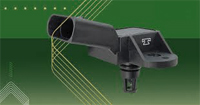“Under the Hood Hunt: Discovering the Ford Map Sensor Location!” – 2023
Introduction
A Brief Overview of the Significance of the Map Sensor
The map sensor, known as the pressure sensor plays a vital role, in how a Ford vehicles engine operates. It acts as a link between the engine and the engine control unit (ECU) providing information about the air pressure inside the intake manifold. This information is used by the ECU to optimize the air fuel mixture ensuring combustion and maximizing engine performance.
Hinting at the Fascinating World of Ford Map Sensor Locations
The whereabouts of the map sensor vary depending on which Ford model you have. While it is usually located near the intake manifold pinpointing its placement can be quite challenging. In models it remains hidden away in a spot while in others it is more easily accessible. This mysterious aspect surrounding Ford map sensor locations adds an element to locating and replacing this component.

Understanding What a Map Sensor Is
Explanation and Purpose
Ford Map Sensor : A map sensor functions, as a transducer that converts air pressure within the manifold into a signal. This signal is then transmitted to the engine control unit (ECU) which utilizes it to adjust the fuel injection system.
The map sensor has a role, in maintaining the air fuel mixture ratios by monitoring and responding to changes in intake manifold pressure. It significantly impacts the performance of Ford vehicles in ways. Not does it directly influence engine efficiency. It also plays a role in improving fuel economy and controlling emissions. By ensuring a balance, between air and fuel the map sensor helps optimize combustion resulting in fuel consumption and reduced exhaust emissions.

Why the Map Sensor Matters in Ford Cars
The impact, on engine efficiency is greatly influenced by the map sensors ability to accurately measure pressure. This precise data enables the engine control unit (ECU) to optimize performance generating power while minimizing fuel consumption.
When it comes to fuel economy the map sensor plays a role by optimizing combustion and reducing fuel wastage. This leads to improved mileage and cost savings for owners of Ford vehicles while also contributing to an environmental impact.
Another important aspect of the map sensor is its connection to emission control. By ensuring that the air fuel mixture remains within levels it helps minimize the production of pollutants, like carbon monoxide, hydrocarbons and nitrogen oxides. In this way the map sensor actively contributes to emissions safeguarding both health and the environment.
Looking back at how map sensors have evolved in Ford vehicles over time provides insights. These sensors made their debut in Ford vehicles during the 1970s when electronic engine management systems were introduced. Initially they were devices that used a diaphragm and potentiometer to convert pressure into an electrical signal. However these early sensors had some accuracy issues. Required adjustments.

Advancements in Technology – Ford Map Sensor
Throughout the years map sensors have made strides in terms of technology resulting in improved performance, reliability and longevity. Nowadays modern map sensors utilize silicon technology to accurately measure pressure across a range of operating conditions. These sensors are less affected by factors and require upkeep.
Locating the Map Sensor: A General Guide
Overview Ford Map Sensor Location
While the exact Ford map sensor location varies depending on the specific Ford model, it is generally found in the vicinity of the intake manifold. Common areas to search for the map sensor include:
• Near the throttle body
• Attached to the intake manifold
• Integrated into the intake manifold
Importance of Vehicle Model and Year in the Search
The Ford map sensor location can vary significantly between different Ford models and even between different generations of the same model. Therefore, it is crucial to consult the vehicle’s repair manual or online resources to identify the specific location for the particular model and year.
Tools You Need for the Quest
Necessary Equipment for a Smooth Exploration
To embark on the quest for the map sensor, a few essential tools are recommended:
• Flashlight: Illuminating dark or hidden areas
• Screwdrivers: Removing screws or fasteners
• Pliers: Loosening or tightening clamps
• Socket wrench: Accessing hard-to-reach areas
Tips for a DIY Approach – Ford Map Sensor
Before embarking on a DIY map sensor search, consider these tips:
• Familiarize yourself with the vehicle’s repair manual or online resources
• Work in a well-lit and extensive area
• Disconnect the battery for safety
• Handle electrical components with care
• Label any removed parts or connectors for easy reassembly
Ford Map Sensor Location in Popular Models
Focus on Ford F-150: Specifics for Different Generations
The location of the map sensor in the Ford F-150 has changed over the years:
• 1997-2003 F-150: Located on the underside of the upper intake manifold
• 2004-2008 F-150: Mounted on the driver’s side of the upper intake manifold
• 2009-2014 F-150: Integrated into the driver’s side of the intake manifold
Tips for Accurate Identification
To accurately identify the map sensor in the Ford F-150, follow these tips:
• Trace the vacuum hoses connected to the intake manifold
• Look for a small electrical connector near the intake manifold
• Consult the vehicle’s repair manual or online resources for specific diagrams
Dive into the Ford Mustang
Map Sensor Nuances Across Models
The location of the map sensor in the Ford Mustang varies depending on the model year:
• 1996-2004 Mustang: Located on the passenger’s side of the upper intake manifold
• 2005-2009 Mustang: Integrated into the driver’s side of the intake manifold
• 2010-2014 Mustang: Mounted on the driver’s side of the upper intake manifold
Unveiling Hidden Spots
The map sensor in some Ford Mustang models can be hidden behind other components. To locate it, follow these steps:
• Remove the air cleaner assembly
• Inspect the area around the intake manifold for the map sensor
• Consult the vehicle’s repair manual or online resources for specific diagrams
Map Sensor Location in Older vs. Newer Models
Implications for Maintenance and Troubleshooting
The varying locations of the map sensor in older and newer Ford models have implications for both maintenance and troubleshooting.
Maintenance:
• Older models: Due to the more accessible location of the map sensor in older models, regular inspection and replacement are relatively straightforward. Mechanics can easily locate and assess the sensor’s condition without extensive disassembly.
• Newer models: The integrated nature of the map sensor in newer models makes it more challenging to access for routine maintenance. Mechanics may need to remove other components or utilize specialized tools to reach the sensor, increasing the labor time and cost associated with maintenance.
Troubleshooting:
• Older models: When troubleshooting issues related to the engine’s air-fuel mixture or performance, mechanics can readily inspect the map sensor in older models due to its accessible location. This can expedite the diagnostic process and narrow down potential causes more efficiently.
• Newer models: Troubleshooting map sensor-related issues in newer models may be more time-consuming due to the sensor’s hidden placement. Mechanics may need to consult detailed repair manuals or diagrams to locate the sensor accurately, potentially prolonging the diagnostic process.
The placement of map sensors, in Ford vehicles has both advantages and disadvantages as it evolves. While newer models benefit from a engine design integrating the sensor may make maintenance and troubleshooting tasks more complex. It is important for both vehicle owners and mechanics to understand these differences to ensure maintenance and timely resolution of any engine related issues.
FAQ
What is a map sensor. What does it do?
A map sensor, also known as an pressure sensor is a device that measures the air pressure inside the intake manifold of a cars engine. The information collected by the map sensor is sent to the engine control unit (ECU) which uses it to calculate the amount of fuel to inject into the engine. This helps maintain an air fuel ratio for operation.
Where can I find the map sensor in a Ford vehicle?
The location of the map sensor varies depending on the Ford model and year. However it is generally positioned near the manifold. In some models you will find the map sensor mounted on top of or adjacent, to the manifold while in others it is integrated directly into the manifold itself. For information regarding your vehicles map sensor location please refer to its repair manual.
How can I determine if my map sensor is faulty?
There are a signs that might indicate a map sensor. These signs include;
Engine stalling or misfiring Poor fuel efficiency The check engine light being illuminated Decreased engine power
If you experience any of these symptoms it’s advisable to have a qualified mechanic inspect your map sensor.
What is the approximate cost of replacing a map sensor?
The cost of replacing a map sensor can vary depending on the model and year of your Ford vehicle. On average however it typically ranges between $50 and $100 for both parts and labor.
Can I replace my map sensor myself?
Absolutely! If you have some skills you can definitely replace your map sensor on your own. Just make sure to refer to the vehicles repair manual or check resources to ensure you’re doing it correctly.
How frequently would it be good to change my map sensor?
It’s hard to give an answer, to this question since the lifespan of a map sensor can vary. Factors like driving conditions and maintenance habits play a role. However in general most map sensors tend to last between 50,000 and 100,000 miles.
Conclusion
The map sensor may seem small. It plays a role in the performance and operation of Ford vehicles. Its accurate measurement of pressure is vital, for optimizing engine efficiency, fuel economy and controlling emissions. Understanding the significance of the map sensor empowers Ford vehicle owners to appreciate their engines intricacies and maintain these components effectively.






